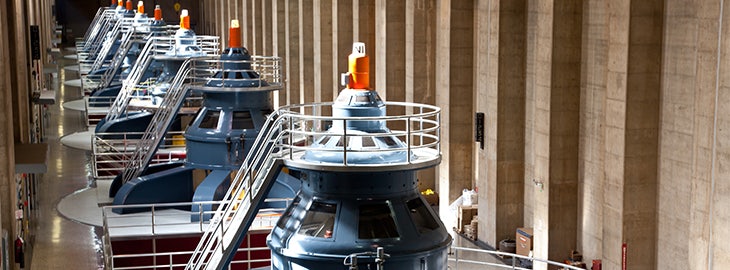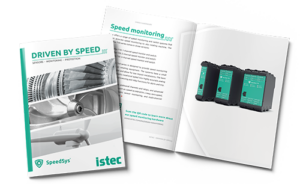Hydropower plants rely on rotating machinery, such as turbines and generators, to efficiently convert water energy into electricity. Ensuring the safety and longevity of these critical components is paramount. One of the most significant risks in hydropower generation is an overspeed event, where a turbine exceeds its design limits, potentially leading to catastrophic failure. Implementing an overspeed detection system (ODS) is crucial for mitigating these risks. Below are the top three reasons to integrate an ODS into hydro turbine operations.
Preventing catastrophic turbine failure
Overspeed events can lead to severe mechanical damage in hydro turbines. When a turbine exceeds its design speed, the centrifugal forces acting on the rotor increase exponentially, potentially causing:
- Blade detachment and rotor disintegration
- Bearing and shaft failure
- Structural damage to the turbine housing
Such failures not only lead to extensive equipment damage but also pose significant safety hazards to personnel and the surrounding infrastructure. Although hydro turbines typically operate at lower rotational speeds than gas or steam turbines, the risk of mechanical damage at overspeed remains serious. An overspeed detection system ensures that any excessive speed increase is detected in real time, triggering an automatic trip function to shut down the turbine before damage occurs.
Compliance with industry safety standards
The hydropower industry follows strict regulations and guidelines to ensure safe operation. Standards such as IEC 61508 (Functional Safety) and IEC 61511 require the use of independent protection systems to mitigate risks associated with high-speed rotating equipment. An ODS provides a dedicated layer of protection, independent of the primary control system, ensuring compliance with:
- Safety Integrity Level (SIL) requirements (up to SIL 3 in critical applications)
- Grid and regulatory body mandates
- OEM-specified operational limits
Operators may also need to adhere to additional standards, such as API 670 for overspeed and condition monitoring, IEEE 125 and IEEE 2800 for generator behavior, and ISO 20816 for vibration monitoring. Although API 670 was primarily developed for the oil and gas industry, the standard is used as a reference for overspeed and vibration protection in some high-spec hydro applications. Some utilities enforce their internal safety protocols, making ODS implementation even more crucial.
Enhancing operational reliability and uptime
A well-maintained overspeed detection system improves the overall reliability of hydro turbines by preventing unnecessary shutdowns and mechanical wear. Without proper overspeed protection, frequent emergency stops due to uncontrolled speed fluctuations can lead to:
- Increased maintenance costs
- Reduced lifespan of turbine components
- Unplanned downtime and loss of power generation
By providing a last line of defence against uncontrolled speed increases, an ODS helps prevent turbine damage and contributes to reliable long-term operation. Additionally, modern overspeed protection systems, such as the Istec SpeedSys series, offer self-monitoring capabilities, improving diagnostic accuracy and reducing the need for frequent manual inspections.
 Overspeed detection systems are essential for the safe and efficient operation of hydro turbines. They prevent catastrophic failures, ensure compliance with safety standards, and enhance reliability. Hydropower operators looking to optimize turbine safety and longevity should prioritize the implementation of a robust ODS, such as the Istec SpeedSys 200 or SpeedSys 300, to protect both their equipment and personnel from the risks associated with overspeed conditions.
Overspeed detection systems are essential for the safe and efficient operation of hydro turbines. They prevent catastrophic failures, ensure compliance with safety standards, and enhance reliability. Hydropower operators looking to optimize turbine safety and longevity should prioritize the implementation of a robust ODS, such as the Istec SpeedSys 200 or SpeedSys 300, to protect both their equipment and personnel from the risks associated with overspeed conditions.
The speed product brochure provides a complete overview of our tachometers, overspeed detection systems, and speed sensors.


